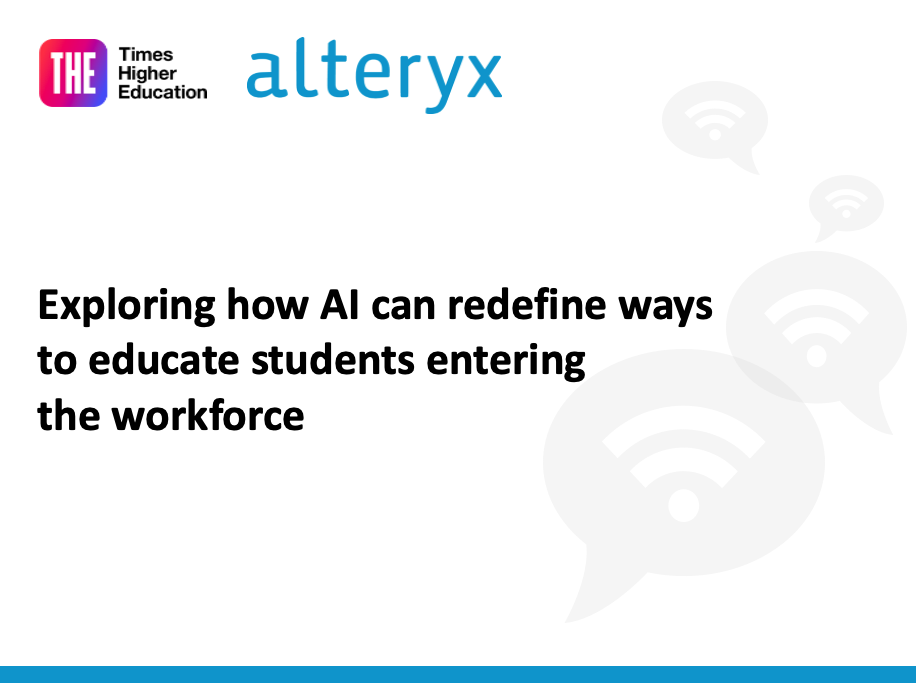Artificial intelligence is changing the way students learn but it hasn’t changed what matters most: the ability to think critically. GenAI is not a substitute for human reasoning, which is why it’s so important that faculty double down on encouraging critical thinking in their courses.
Why critical thinking still matters
Large language models like ChatGPT make it easy to overlook what we call “useful cognition”. When assignments can be completed with a quick prompt, students risk missing the deeper reasoning they were designed to build. The real challenge for faculty isn’t just catching misuse – it’s inspiring students to want to take the long path instead of shortcuts. Below are some practical tips instructors can adopt to encourage critical thinking in the classroom.
1. Rethink assignments and assessments
Keeping inspiration alive can mean rethinking the structure of your courses. Encouraging students to willingly engage with course material is the key. Traditional assignments often don’t measure up in the age of GenAI – asking students to produce content simply isn’t enough. The emphasis should shift toward evaluating, critiquing and building on what these tools generate. Encouraging high-level conversations and discussing LLM outputs is one way to enhance critical thinking while using GenAI in the classroom.
- Use GenAI to slow down and reflect more deeply
- What happened to creativity in the classroom?
- Spotlight guide: Soft skills for hard times
Too much emphasis on finding the “right” answer misses the point. In professional practice, the value lies in questioning whether results make sense, the ability to troubleshoot errors and validate outcomes. GenAI can speed up basic tasks but it’s the critical overlay that makes its use worthwhile. Students should be able to arrive at a conclusion and still coherently explain the process that led them to their answer and their reasoning.
One emerging teaching method is evaluating students’ assessments of an answer. Through the building of final product maps, students can show their interpretations of answers from beginning to end. This allows instructors to see how students are working to solve their problems through critical thinking, even if their answers are incorrect.
2. Address concerns while building confidence
Many students approach GenAI with hesitation, either because they worry about ethical usage or because the technology feels intimidating. One way to mitigate these concerns to is to intentionally design introductory courses to un-terrify students, starting with familiar tools like calculators before gradually layering in more complex applications. The goal is to show them that GenAI isn’t off limits – it’s another tool that becomes more powerful when paired with applied knowledge.
3. Avoid overuse and reliance
Still, there are risks at both ends of the spectrum. Students who rely too heavily on GenAI might graduate without the ability to think independently, while those who avoid it altogether risk being unprepared for workplaces where it’s already being used. This is where faculty can work to lessen the intimidation factor, looking at coursework through the eyes of a student.
Instructors should understand that some students might avoid using GenAI, and it’s their responsibility as educators to emphasise how much of an impact the technology will have on the future of most professions. The middle ground is to engage with GenAI actively and critically. That means treating AI outputs as a starting point and developing the ability to recognise when those outputs are wrong, biased or misleading.
4. Act as a role model
Faculty play a key role in modelling the ethical use of GenAI while retaining critical thinking. Using GenAI to streamline low-stakes tasks such as updating syllabi, but not for grading, is one example of how educators can engage with it to facilitate their own tasks. It’s also important for students to receive individualised feedback when navigating GenAI tools to keep guidelines and expectations clear while building the teacher-student relationship.
5. Strive for institutional support and AI literacy
When implementing or expanding AI, institutional support matters. Educators need resources and professional collaboration to integrate the tools into their teaching. Initiatives such as AI Across the Curriculum give students exposure in every discipline, ensuring that whether they study business, journalism, engineering or the arts, they graduate with working literacy in the tools shaping the future of their fields.
It is also important to create a culture where professional development and collaboration opportunities are available to faculty, helping them embed their expertise with confidence.
The bigger picture
The key takeaway is that GenAI doesn’t diminish the need for critical thinking, it heightens it. By redesigning assignments and creating space for students to question results, faculty can ensure students have the skills to set them apart.
Rather than competing forces, GenAI and critical thinking can, and should, work together. Students who learn to engage with both will be better problem-solvers, adaptable professionals and beneficial contributors to society.
In the end, GenAI and critical thinking are not in conflict. Together, they prepare students to thrive in a world where human reasoning and machine intelligence go hand in hand.
Joel Davis is professor and director of the David F. Miller Retail Center; Jane Southworth is professor and co-chair of AI Across the Curriculum; and Kati Migliaccio is professor and co-chair of AI Across the Curriculum, all at the University of Florida.
If you’d like advice and insight from academics and university staff delivered direct to your inbox each week, sign up for the Campus newsletter.




comment